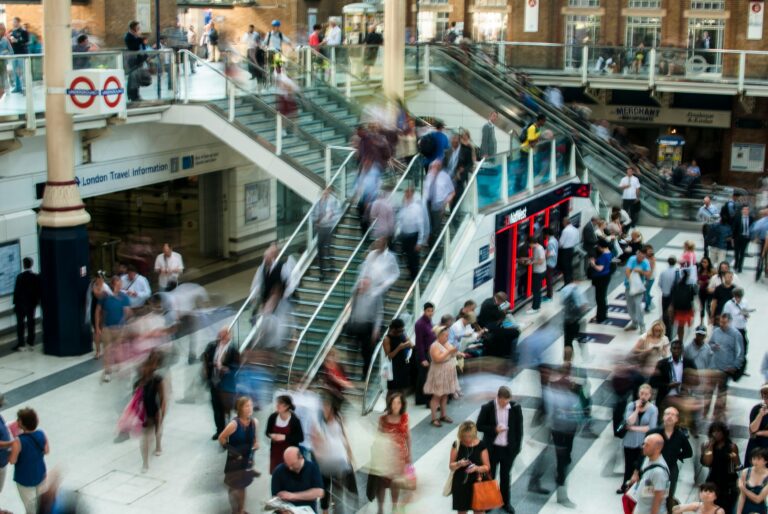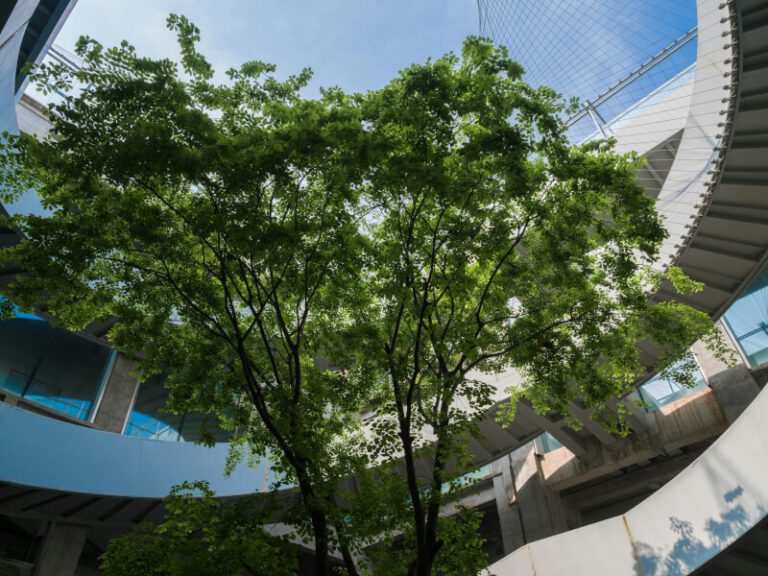For years, our answers to urban problems have followed a familiar pattern: find a new app, a smarter vehicle, or a more efficient building, and trust that technology will do the rest. From ride-hailing platforms promising seamless mobility to peer-to-peer apps sharing “underutilised” homes, we’ve kept layering new solutions onto old systems, hoping they will transform the way our cities function.
Yet adding technology without a major rethink of how our cities work and the goals we prioritise makes our problems worse. Car-dependence becomes more engrained, housing increasingly unaffordable, green spaces shrink, and emissions rise. These aren’t isolated failures but symptoms of a deeper one: the way we think about cities and the built environment.
At Hot or Cool, we published a report earlier this year together with the Club of Rome, Transforming the Built Environment: A Systems Thinking Approach for Sustainable Urban Futures, arguing that our linear, siloed, and technology-centred mindset is no longer fit for purpose. If cities are to become places where people and planet thrive together, we need to stop optimising individual parts and start reorganising systems as a whole.
Moving to a different solution space
The report identifies four solution spaces that describe how cities frame and approach sustainability:
- Optimised Status Quo, which focuses on narrow views of sustainability and short-term efficiency gains at the lowest scale (vehicles, appliances, etc.)
- Sectoral Optimisation, where despite increased awareness of multiple challenges the focus remains on specific domains like transport, buildings, or energy in isolation.
- Emergent paradigms, where new models rethink goals and reorganize interactions, but fail to mainstream transformation.
- Societal transformation, where systems thinking, equity, and ecological limits converge to reshape the foundations of urban life.
A major drawback to advancing ambitious climate and social goals is that most cities today are stuck in the first two spaces, prioritizing efforts and resources in high-tech fixes and the pursuit of sustainable sectors.
Fortunately there are relevant exceptions, and a growing number of cities are no longer aiming to create sustainable parts in unsustainable systems but to reimagine the entire web of connections that shape urban life; moving into the emergent paradigm space.The challenge is to avoid getting stuck in cities of stunted islands of success and start navigating into the societal transformation space where a systemic lens is also used for creating the local ownership and shared visions needed to mainstream new paradigms.
A systems approach
At the heart of the report is a call to embrace systems thinking – a way of seeing cities as networks of relationships between people, infrastructure, and nature. Instead of asking how to improve a single building or bus route, systems thinking looks at how these elements interact, and how together they can enable (or hinder) wellbeing for both people and planet: how key provisioning systems like transport and housing interact to provide sustainable access, how urban design affects biodiversity, and how energy policies simultaneously shape health and equity.
This perspective reveals both the root causes of unsustainability and the leverage points for addressing them. In the United Kingdom, for instance, analysts used participatory systems mapping to understand how retrofitting homes for energy efficiency affects wider consumption patterns. The exercise uncovered rebound effects, where energy savings in one area led to higher energy use elsewhere, showing that decarbonisation requires more than technological upgrades. It calls for rethinking the social and economic systems those technologies sit within.
Examples of transformation
In Barcelona, this shift is visible on the streets. The city’s Superblocks rethink urban form by prioritising people and ecosystems over cars. What began as a mobility initiative evolved into a systemic reorganisation of space: increasing green areas, improving air quality, fostering proximity, and strengthening local economies. The model has since inspired cities across the world, not because it optimised traffic flow, but because it redefined what the city is for.
The same thinking guides work in the Metropolitan Region of Barcelona, where local planners and researchers are addressing the social risks of large-scale housing renovation. Energy efficiency measures, while essential for climate goals, risk driving up rents and displacing residents if applied in isolation. By bringing citizens, architects, and policymakers together in shared analysis, the project reframes housing policy as a question of fairness, resilience, and community – not just technology.
Our efforts
At Hot or Cool, this systems approach underpins our Sustainable Urban Systems programme, which focuses on shifting thinking and practice away from linear and siloed approaches to make sustainable urban lifestyles become affordable, appealing, and accessible.
The programme combines systems thinking with participatory and co-creation approaches as a means to bring collective action around new promising models and paradigms, while enabling new ones to emerge. We facilitate the development of shared visions of sustainable urban futures and enable collective identification of transformative policies, investment and ways of working across government and stakeholders to achieve them.
Via our Cities LOOP (Cities Living On One Planet) initiative and our work with the Pathfinder Initiative on Systems Innovation for Healthy and Net-Zero Urban Futures, we provide concrete tools and accompany cities to map interconnections, and design systemic pathways toward living well within planetary boundaries. For doing so we collaborate with key institutions such as the OECD Development Centre, the Club of Rome and Sur Institute.
It is our thinking that if we can deeply reshape the foundations of urban life – how we design, govern, and imagine the spaces we inhabit – possibilities expand. Efficiency gives way to resilience, isolation turns into connection, and the built environment becomes what it should be – an enabler of thriving lives that don´t have to cost the planet.







